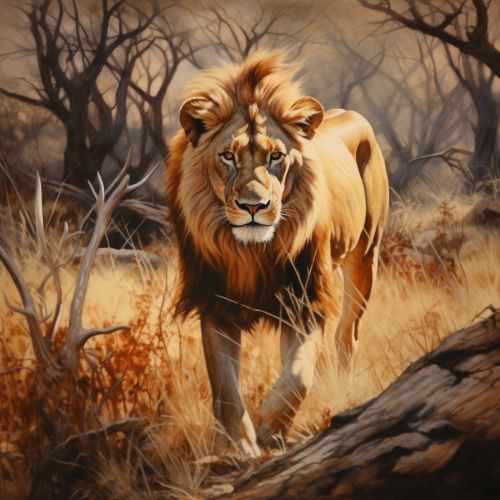Predator-Prey Interactions
Introduction
Predator-prey interactions are a fundamental aspect of ecology, shaping the dynamics of ecosystems and influencing the evolution of species. These interactions occur when a predator species feeds on a prey species, leading to a complex set of relationships that can impact the survival and reproduction of both species. This article will delve into the intricacies of predator-prey interactions, exploring their mechanisms, effects, and the various models used to study them.


Mechanisms of Predator-Prey Interactions
Predator-prey interactions are driven by a variety of mechanisms, including predation, herbivory, parasitism, and competition. These mechanisms can be broadly classified into two categories: lethal and non-lethal interactions.
Lethal Interactions
Lethal interactions occur when the predator kills and consumes the prey. This is the most direct form of predator-prey interaction and can have significant effects on the population dynamics of both species. For example, a high rate of predation can lead to a decrease in the prey population, which in turn can affect the predator population due to a lack of food resources.
Non-Lethal Interactions
Non-lethal interactions, on the other hand, occur when the presence of a predator influences the behavior, physiology, or life history of the prey, without necessarily leading to its death. This can include changes in feeding habits, habitat use, and reproductive strategies. These interactions can also have significant effects on the population dynamics and community structure of ecosystems.
Effects of Predator-Prey Interactions
Predator-prey interactions can have wide-ranging effects on both the species involved and the wider ecosystem. These effects can be observed at the individual, population, and community levels.
Individual Level
At the individual level, predator-prey interactions can influence the behavior and physiology of both predators and prey. For example, predators may develop specialized hunting strategies to capture their prey, while prey may evolve defensive mechanisms such as camouflage or warning signals to avoid predation.
Population Level
At the population level, predator-prey interactions can influence the size and distribution of populations. Predation can regulate prey populations by reducing their numbers, while the availability of prey can influence the size of predator populations. This dynamic relationship is often described by the Lotka-Volterra equations, a set of mathematical models that describe the cyclical nature of predator-prey interactions.
Community Level
At the community level, predator-prey interactions can influence the structure and diversity of communities. Predators can control the abundance of dominant prey species, allowing less competitive species to coexist. This process, known as trophic cascades, can lead to increased biodiversity in ecosystems.
Models of Predator-Prey Interactions
Several models have been developed to study predator-prey interactions, including the Lotka-Volterra model, the functional response model, and the predator satiation model.
Lotka-Volterra Model
The Lotka-Volterra model is a set of differential equations that describe the dynamics of predator-prey interactions. The model assumes that the prey population grows exponentially in the absence of predators, and that the predator population declines in the absence of prey. The model also assumes that the rate of predation is proportional to the product of the predator and prey populations.
Functional Response Model
The functional response model describes the relationship between the rate of prey consumption and the density of the prey population. The model identifies three types of functional responses: Type I, where the rate of prey consumption increases linearly with prey density; Type II, where the rate of prey consumption increases at a decreasing rate with prey density; and Type III, where the rate of prey consumption increases at an increasing rate with prey density.
Predator Satiation Model
The predator satiation model describes a strategy used by prey species to reduce the impact of predation. The strategy involves synchronizing the reproduction of the prey population so that a large number of offspring are produced at once, thereby satiating the predator population and increasing the survival rate of the offspring.
Conclusion
Predator-prey interactions are a complex and fascinating aspect of ecology, influencing the evolution of species and shaping the dynamics of ecosystems. Understanding these interactions can provide valuable insights into the mechanisms of biodiversity and the functioning of ecosystems.
